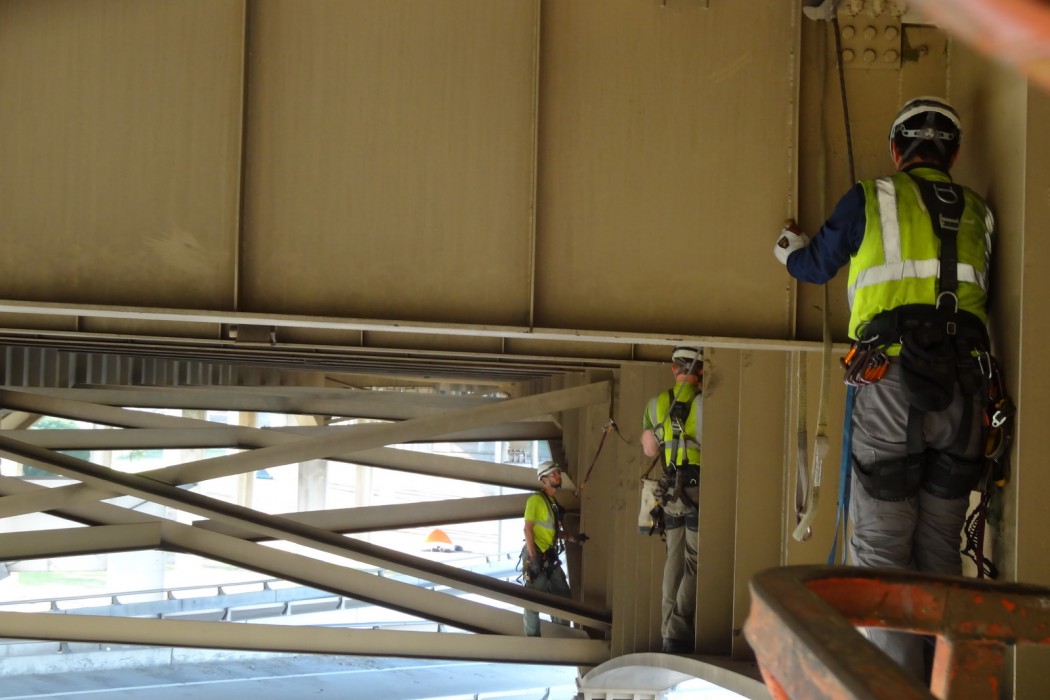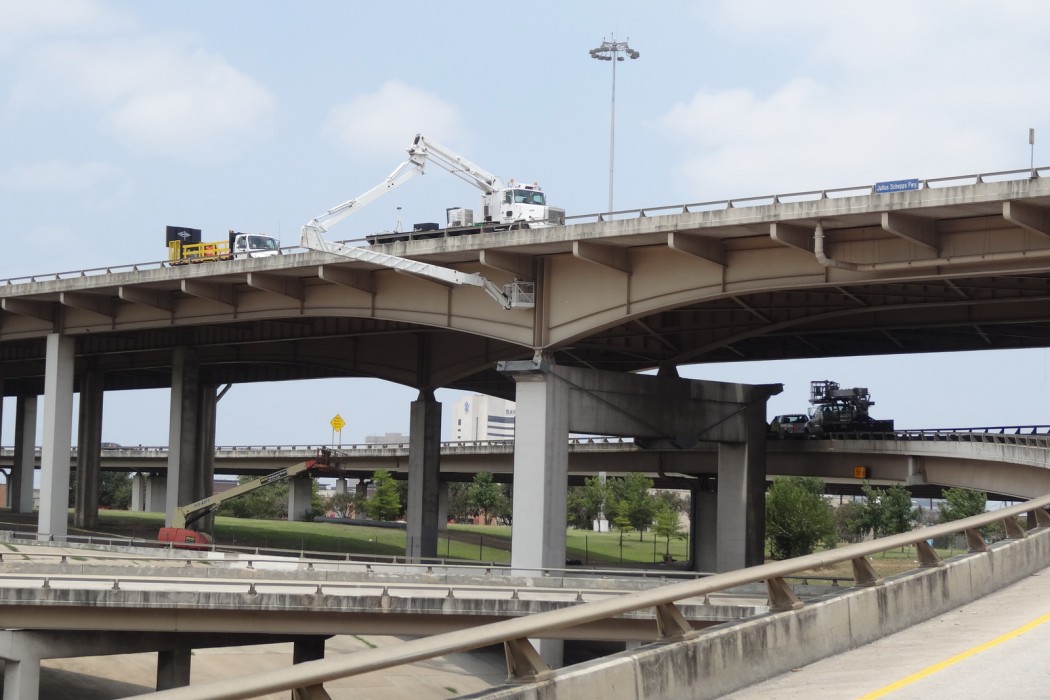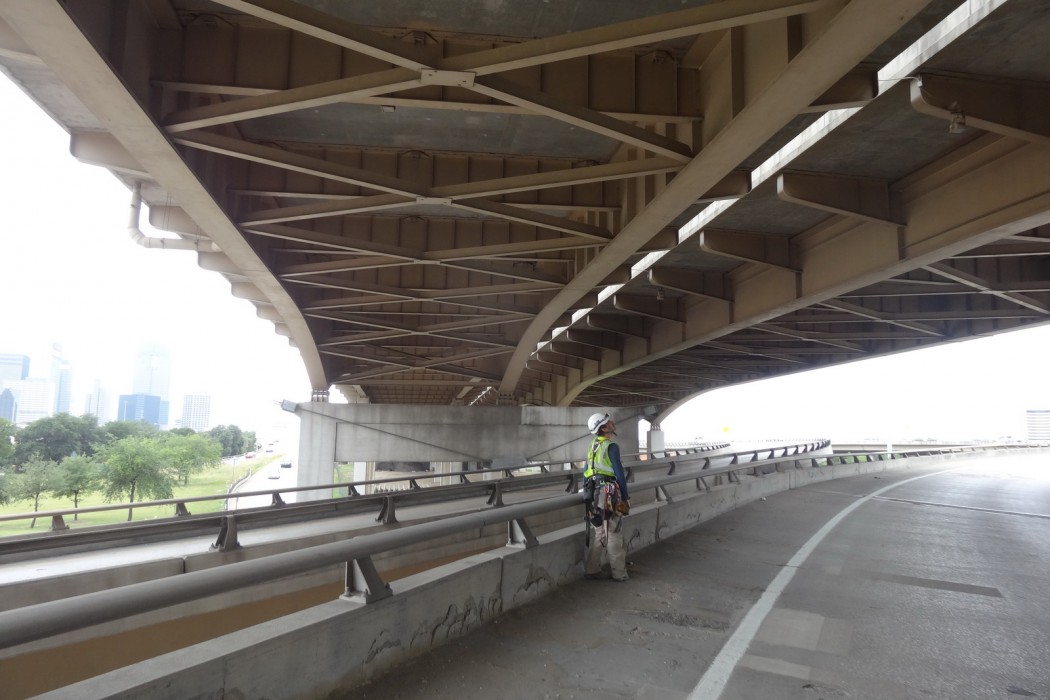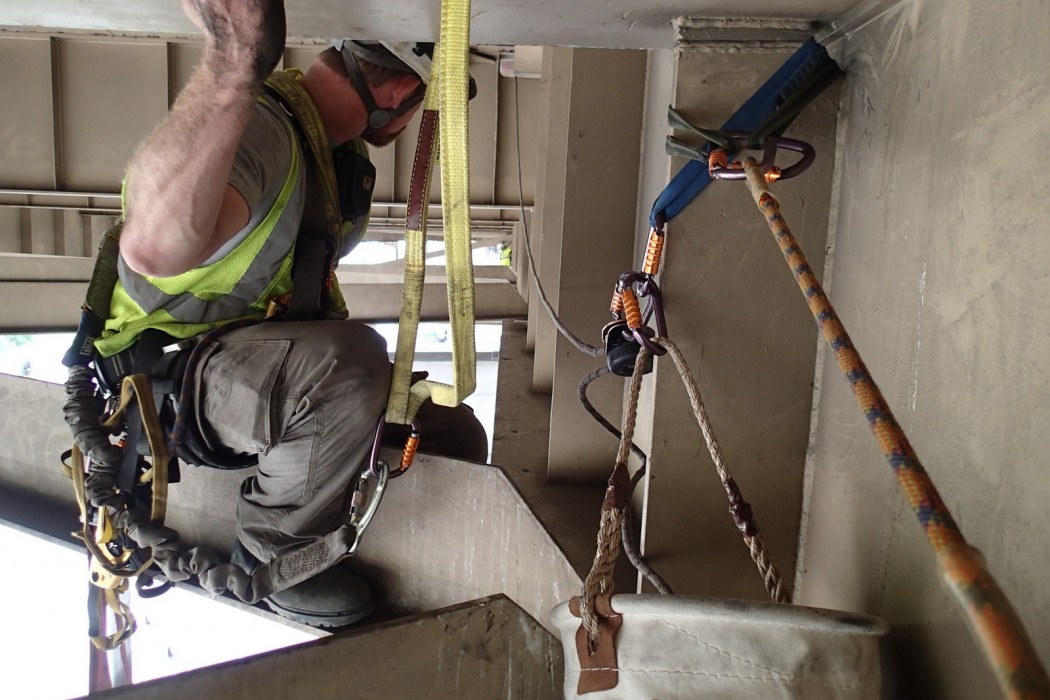WJE PROJECTS
IH-345
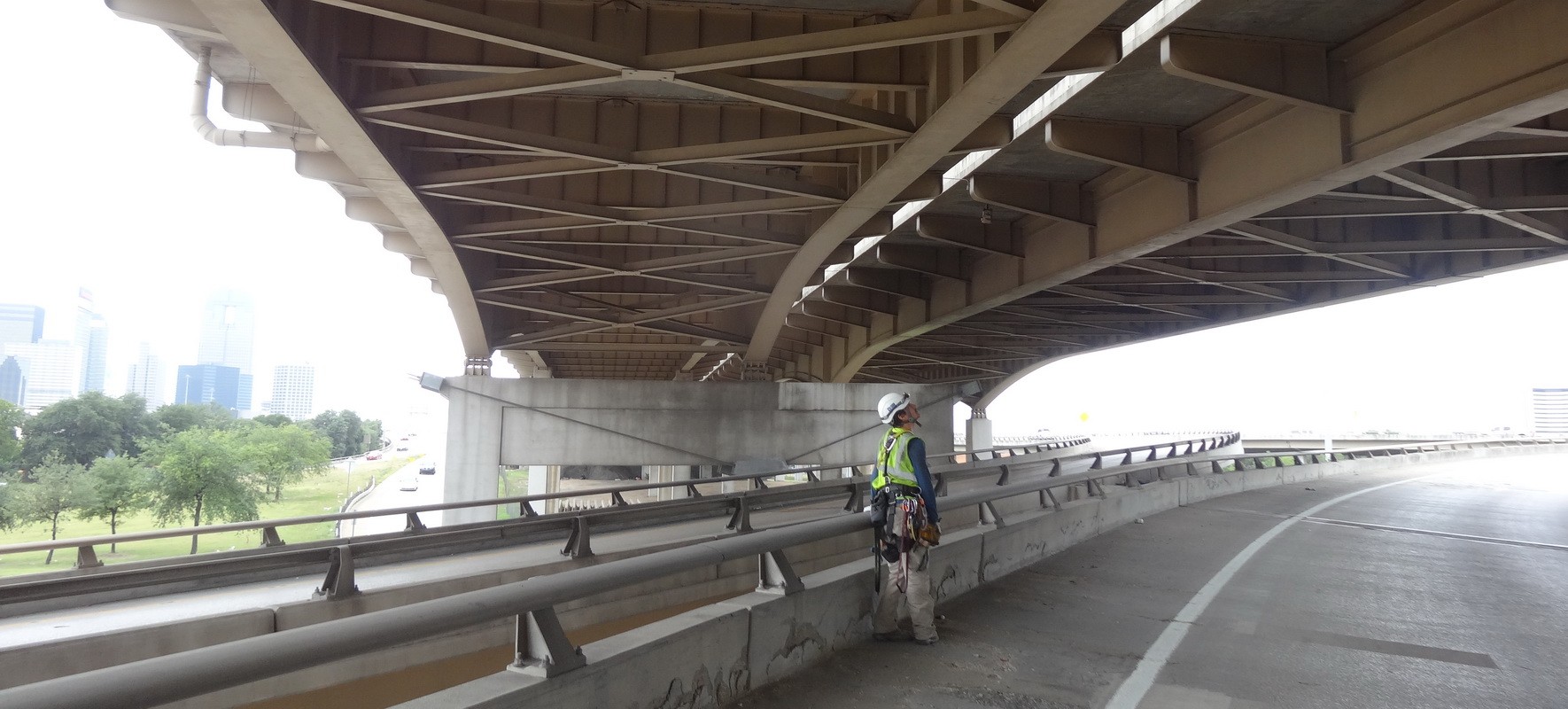

CLIENT |
Texas Department of Transportation (TxDOT) |
LOCATION |
Dallas, TX |
Condition Assessment, Instrumentation, and Retrofit
To assist TxDOT with long-term rehabilitation decisions, WJE was retained as a subconsultant to Parsons Brinkerhoff to perform a fracture critical inspection of the steel girders, visual examination of substructure elements, and a visual and exploratory study of the PT deck. WJE was also engaged to perform instrumentation and field testing for finite element method model calibration and trial retrofit installations for structure performance verification.
BACKGROUND
Completed in 1971, the 1.6-mile steel structure connects I-35, I-45, and US 75 with local city streets. Its sixty-five units typically consist of two welded plate girders in two to four continuous span units. Floor beams with cantilevers support a transversely and longitudinally post-tensioned (PT) concrete deck. The structure is primarily supported on individual concrete column piers, often offset to accommodate city roadways below.
Since the 1990s, the units have exhibited distortion-induced fatigue cracking at top and bottom flange floor beam-to-girder connections. Multiple retrofit efforts were not fully successful in stopping additional crack growth.
SOLUTION
WJE utilized various access methods during the six-week condition assessment, including under-bridge inspection vehicles, aerial lifts, and technical rope access techniques. To efficiently collect field information, WJE's Plannotate data collection application was used. The tablet-based system allowed for information sharing at the site, at the office, and outside of WJE. Connection information, including previous inspection and retrofit data, were available to inspectors during their work. Using the interactive web-based software, WJE engineers reported their findings quickly and accurately, at times uploading up to 1,500 pictures a day.
Exploratory deck openings, located using GPR, were made to inspect the condition of representative straight and draped PT tendons and anchorage points.
In-plane fatigue data were collected using an NI Wireless System to avoid running long lead wires. Connection instrumentation utilized the Campbell CR9000X. Strains and displacements were measured under typical traffic and during load tests completed using rolling traffic closures. WJE engineers also provided finite element method guidance and quality assurance reviews as well as retrofit development during the work.
RELATED INFORMATION
-
 Our knowledge of bridge performance is supported by technical expertise in structural... MORE >Services | Bridge Engineering
Our knowledge of bridge performance is supported by technical expertise in structural... MORE >Services | Bridge Engineering -
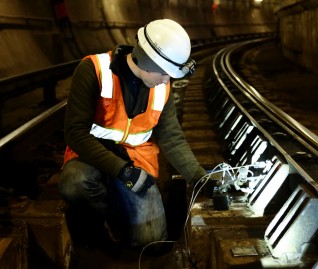 We engage a full suite of state-of-the-art instrumentation and monitoring capabilities to test... MORE >Services | Instrumentation and Monitoring
We engage a full suite of state-of-the-art instrumentation and monitoring capabilities to test... MORE >Services | Instrumentation and Monitoring -
 We have pioneered the use of nondestructive evaluation methods—such as ground penetrating... MORE >Services | Nondestructive Evaluation
We have pioneered the use of nondestructive evaluation methods—such as ground penetrating... MORE >Services | Nondestructive Evaluation




































